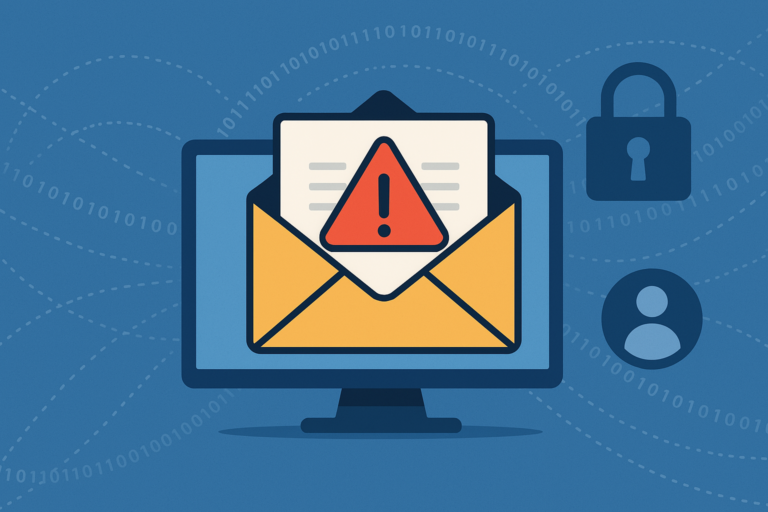Most people don’t think twice before typing their email address into a website.
It’s often required to sign up for services, access content, enter giveaways, or download tools. We treat it as basic digital currency — the price we pay for convenience. But what seems like a simple form field can become a long-term vulnerability.
Behind that single interaction is a web of invisible consequences: tracking, profiling, data sales, and loss of control over your digital presence. The dangers aren’t always immediate — and that’s exactly why they’re so effective.
In this article, we explore the hidden risks of handing out your email address online — and what you can do to avoid them.
Your Email Is a Permanent Identifier
Unlike a password or credit card number, your email doesn’t expire or rotate. It’s tied to your identity across countless platforms — from newsletters and customer accounts to payment systems and social media.
Once shared, your email becomes an anchor point for tracking. Advertisers use it to link together browsing habits, ad clicks, app activity, and more. Even if you block cookies or use a VPN, your email can be used to fingerprint your behavior.
What’s worse: the more you reuse the same address, the easier it becomes for third parties to map your entire online profile.
Third-Party Sharing Is Common — and Often Hidden
Many websites don’t just use your email internally. They share it with “partners,” “affiliates,” or “marketing networks.” These terms are often buried in privacy policies, phrased vaguely enough that you might not notice what you’re agreeing to.
Once your address is in circulation, it can end up in massive email databases — some of which are bought and sold repeatedly. Even if you unsubscribe or delete your account, copies of your email may still live on in systems you never directly interacted with.
According to Mozilla Foundation, even some popular platforms labeled as privacy-friendly have vague or questionable data practices when it comes to user tracking.
Spam Isn’t Just Annoying — It’s a Gateway
Receiving too many emails isn’t just inconvenient. It increases the chance that you’ll miss important messages, fall for phishing attempts, or click something malicious by accident.
Spammers know that most users have some level of email fatigue. That’s why they try to blend in — pretending to be shipping notifications, invoices, account alerts, or even support messages. Once your email is widely distributed, your exposure grows every day.
The result? Inbox overload, lost focus, and a higher risk of clicking the wrong thing at the wrong time.
Breaches and Leaks Are Inevitable
Even well-meaning websites get hacked. Even secure platforms make mistakes.
From large-scale leaks (like LinkedIn, Adobe, or Dropbox) to smaller niche forums or e-commerce stores — email addresses are almost always part of what gets exposed. And once it’s out, it’s out for good.
If you use the same email everywhere, one breach can open the door to phishing attacks, impersonation, account linking, or even identity theft.
This isn’t hypothetical. Sites like Have I Been Pwned show just how many times the average person’s email has already appeared in leaked databases.
You Lose the Ability to Disappear
When your email address is everywhere, you can’t easily pull away from a service or conversation. Even after unsubscribing or deleting an account, you’ll often keep receiving emails from “similar sources” — or worse, from companies you’ve never heard of.
Your email becomes part of a system that assumes perpetual interest. You can’t start fresh without abandoning your inbox entirely.
The alternative? Use temporary or disposable email addresses for one-off interactions — like those offered by Trashlify. That way, you retain control over when and how the conversation ends.
What You Can Do Instead
You don’t need to go off the grid to protect your inbox. But a few small changes can go a long way:
- Use different emails for different types of services (personal, work, throwaway)
- Be cautious with new or untrusted websites
- Read privacy terms, or at least scan for “partners,” “affiliates,” and “data sharing”
- Use disposable addresses for one-time actions (downloads, contact forms, quick replies)
- Consider email aliases or forwarding tools if available
The goal isn’t to disappear — it’s to choose when and where you appear.
Final Thoughts
Your email address is more than a login. It’s a piece of your digital identity — one that’s being used to build profiles, target ads, and follow your behavior across platforms.
Most of this happens quietly. That’s why it’s so easy to ignore — and why it’s worth paying attention to.
Using your real email sparingly and strategically is a simple step toward a safer, less invasive online life. And when you need a quick, disposable address, tools like Trashlify make it easy to stay anonymous, focused, and in control.

 EN
EN DE
DE FR
FR ES
ES PT
PT